So I have a pretty big java application that I wrote a year ago and I'm trying to understand it again. I'm looking at a method in the code where there is an obvious risk of getting NoSuchElementException: I'm calling .next() on a scanner variable that has been constructed with an arbitrary string. The only thing the method is declared to throw are custom made subclasses of Exception. The risky command isn't written in a catch-block either. The code compiles and works fine and when I use my gui in such a fashion that it should throw a NoSuchElementException nothing happens :O
As a test I wrote a catch-block into the code, compiled it, ran the gui and made it throw NoSuchElementException again and the application successfully caught the exception and acted accordingly. How is it that I can compile the code without specifying the this exception may be thrown? If it's any use at all, here is the code without the catch-block:
public static Expression interpret(final Scanner scanner)
throws
InvalidPosition,
NoSuchSpreadsheet,
IllegalStartOfExpression,
InvalidExpression,
FalseSyntax,
InvalidRange {
String keyword = null;
try {
keyword = scanner.next();
} catch (NoSuchElementException e) {
throw new IllegalStartOfExpression();
}
switch(keyword) {
case "Get":
Position pos = PositionInterpreter.interpret(scanner.next());
Expression expression = Application.instance.get(pos);
if (expression instanceof Text) {
System.out.println("Failure");
} else { System.out.println("Success"); }
return new Text(expression.toString());
case "Int":
return new Int(
scanner.nextInt());
As you can see, the method simply assumes that there is more than one word in the scanner after checking if there is at least the one. How am I getting away with compiling this?
